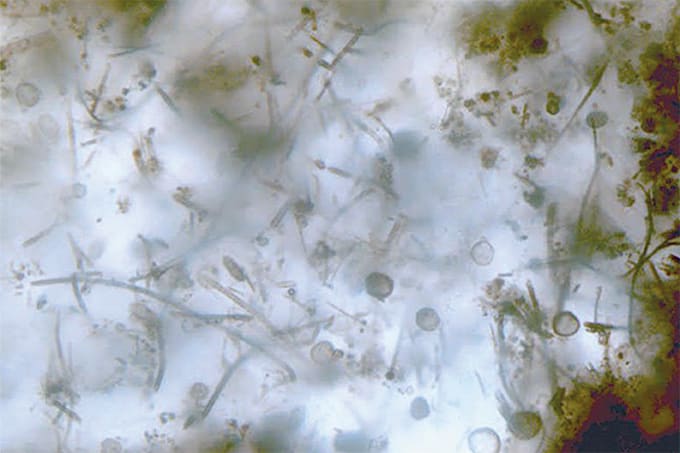A practical advantage of Raman spectroscopy was recently provided by researchers from the University of Kent, UK, in the forensic analysis of lipstick (1). They were able to differentiate samples found on cigarette ends and tissues without the need to remove the items from evidence bags, thus reducing the risk of “compromised continuity”. Professor Michael Went of the University’s School of Physical Sciences fills in the details.
“There is a general principle in forensic science that every contact leaves a trace, so we became interested in the transfer of cosmetic evidence between individuals and between individuals and objects. We had previously looked at Raman spectroscopy for the trace detection of drugs, so we began exploring its use in the analysis of foundation powders, skin creams and eyeliners, but have made the most progress with lipsticks.”

“While Raman spectroscopy has been used before for lipstick analysis, we have arguably demonstrated its potential in forensically important situations.”
How does it work?
“The experiments were conducted with a Horiba LabRAM-HR Raman spectrometer using three different lasers operating at wavelengths of 473, 633, and 784 nm. The lipstick data was pretreated to reduce noise and remove the baseline, and then principal component analysis was applied to reduce the dimensionality. The data were subsequently used to construct a simple k-nearest neighbours (kNN) classifier. Our analysis was implemented in MATLAB R2012a using the Statistics Toolbox.”How reliable is the data?
“We achieved up to 98.7 percent correct classification over 30 spectra of 10 lipstick samples. Spectra from trace lipstick deposited on fibres were also analysed – with 100 percent correct classification.”Any surprises?
“We found that Raman spectroscopy could be used to obtain spectra of the lipstick smears deposited on a variety of surfaces – even through evidence bags, with little or no interference from the bag.”Any further forensic opportunities?
“We have certainly further demonstrated Raman spectroscopy’s ability to non-destructively obtain highly discriminating data from microscopic samples without removal from transparent containers. We will continue to work on other forms of cosmetic evidence.”References
- F. Salahioglu, M. J. Went, and S. J. Gibson, “Application of Raman spectroscopy for the differentiation of lipstick traces”, Analytical Methods, 5, 5392-5401 (2013).




